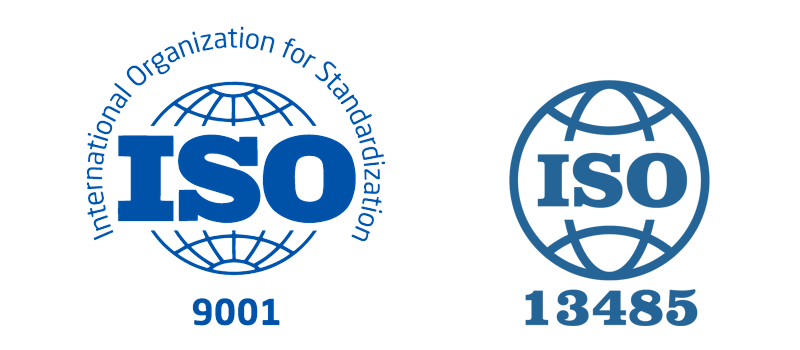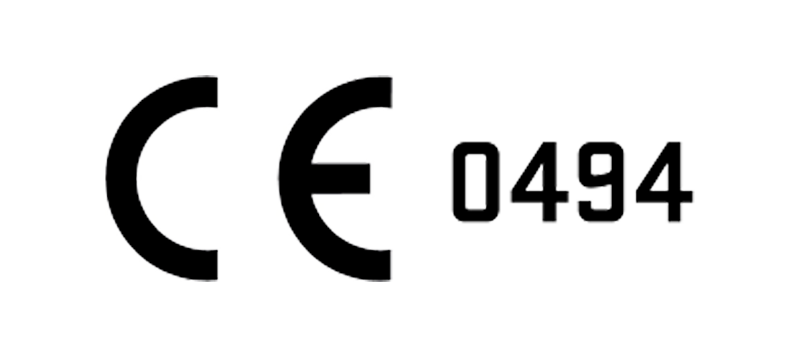Terms and Conditions
Read more...Terms and Conditions
- Views: 499
3
7
European Union
Swiss
United States of America
Canada (registration pending)
Brazil (approval pending)
Maghreb (approval in progress)

ISO 9001 and ISO 13485 are international standards relating to quality management systems:

Instruments bearing the CE marking comply with the essential requirements defined by Directive 93/42/EEC relating to medical devices of June 14, 1993 (last amended by Directive 2007/47/EC). The CE marking guarantees that the use of the device does not compromise the clinical condition and safety of patients or the safety and health of users, it being understood that any risks associated with its use constitute acceptable risks with regard to the benefit provided. to the patient and compatible with a high level of health and safety protection.

The FDA (Food and Drug Administration) is the US federal agency for health and food. FDA approval is mandatory for all medical devices in the United States.
The results
You will find all our complete protocols as well as some examples demonstrating the effectiveness of our LUXe platinum device.
THE RESEARCH
Various investigations have highlighted the role of photomodulation in cell migration, proliferation and differentiation as well as in the regulation of inflammation.
Article published: Validation of the action of LEDs on the speed of neurite growth of sensory neurons : in axotomy conditions, the speed of neurite growth obtained after LED stimulation has reached a threshold never equaled in the articles available in the literature.
Transition before the application of stimulation protocols in the clinic; the investigations set up have made it possible to validate on more integrated models, the various results obtained at the cellular scale.
Transfer of knowledge and technology in therapeutic application: creation of professional and home care devices for clinical use.
An international clinical study in collaboration with a Brazilian team has been set up to evaluate the effect of photomodulation on the scars induced by abdominoplasty. This study definitively validates the effect of Biolux technology on the 4 areas of research, all involved in the post-surgical healing process.
The continuous improvement and innovation of therapeutic possibilities commits Biolux to continue investing in R&D :
✓
by developing new academic and private partnerships (collaboration with renowned doctors and clinics) ✓
by relying on the multidisciplinarity of its R&D team ✓ by offering new functionalities of scalable and ever more innovative devices.
- Burland, M, Paris L. et al.
(2014), Neurite growth acceleration of adult Dorsal Root Ganglion neurons illuminated by low-level Light Emitting Diode light at 645 nm; J. Biophotonics 1-9 (2014)/DOI 10.1002/jbio.201400052 - Basha A. A et al (2016) Effect of LED photobiomodulation on fluorescent light induced changes in cellular ATPases and Cytochrome c oxidase activity in Wistar rat;
J Drugs Dermatol. 2016 Jul 1;15(7):843-8. - Silveira PC et al.
(2016) Effect of Low-Power Laser (LPL) and Light-Emitting Diode (LED) on Inflammatory Response in Burn Wound Healing; Inflammation. 2016 Aug;39(4):1395-404. doi: 10.1007/s10753-016-0371-x. - Lee WJ et al.
(2016) Efficacy of Red or Infrared Light-Emitting Diodes in a Mouse Model of Propionibacterium acnes-Induced Inflammation; Ann Dermatol. 2016 Apr;28(2):186-91. doi: 10.5021/ad.2016.28.2.186. Epub 2016 Mar 31. - Leite SN et al.
(2014) Phototherapy promotes healing of cutaneous wounds in undernourished rats; An Bras Dermatol. 2014 Nov-Dec;89(6):899-904. - Spitler Ret al.
(2014) Comparison of laser and diode sources for acceleration of in vitro wound healing by low-level light therapy; J Biomed Opt. 2014 Mar;19(3):38001. doi: 10.1117/1.JBO.19.3.038001. - Piva, JA d.
AC (2011) Effect of low-level laser therapy on the initial stages of tissue repair: basic principles; Anais Brasileiros from Dermatologia. - Huang, YY, AC Chen, et al.
(2011). Biphasic dose response in low level light therapy – an update; Dose response. 2011;9(4):602-18. doi: 10.2203/dose-response.11-009.Hamblin. Epub 2011 Sep 2. - Huang, YY, AC Chen, et al.
(2009). Biphasic dose response in low level light therapy; Dose Response 2009 Sep 1;7(4):358-83. doi: 10.2203/dose-response.09-027.Hamblin. - Albertini, R., AB Villaverde, et al. (2007). “Anti-inflammatory effects of low-level laser therapy (LLLT) with two different red wavelengths (660 nm and 684 nm) in carrageenan-induced rat paw edema. J Photochem Photobiol B 89(1): 50-55.
LEDs & Soft Peels _ Evaluation of the complementarity of two technologies to fight against skin aging, Dr. Jean-Luc Vigneron. Results presented at SECLARM, Geneva, in 2014
Yoo KH et al. (2015) Efficacy of combination light-emitting diode (635 and 830 nm) therapy in treating local injection-site reactions after filler; Clin Exp Dermatol. 2015 Apr;40(3):333-5. doi: 10.1111/ced.12480. Epub 2014 Sep 30.
Calderhead RG et al.
(2015) Adjunctive 830 nm light-emitting diode therapy can improve the results following aesthetic procedures; Thermal Laser. 2015 Dec 30;24(4):277-89. doi: 10.5978/islsm.15-OR-17. Oh IY (2013) Efficacy of light-emitting diode photomodulation in reducing erythema after fractional carbon dioxide laser resurfacing: a pilot study;
Dermatol Surg. 2013 Aug;39(8):1171-6. doi: 10.1111/dsu.12213. Epub 2013 Apr 3. Lee, SY, KH Park, et al. (2007). A prospective, randomized, placebo-controlled, double-blinded, and split-face clinical study on LED phototherapy for skin rejuvenation: clinical, profilometric, histologic, ultrastructural, and biochemical evaluations and comparison of three different treatment settings; J Photochem Photobiol B 88(1): 51-67.
PHOTOMODULATION
Photomodulation by LEDs (Light Emitting Diodes) is one of the non-invasive phototherapy techniques .
It involves the use of light of specific wavelengths at low intensity to stimulate natural biological repair mechanisms.
By offering a range of wavelengths between 470 and 850 nm, Biolux technology uses lights capable of penetrating tissue at different depths to stimulate cells, opening a therapeutic window.
The choice of wavelengths defines the indications for which the technology can be used.
✓ bactericidal effect
✓ supports the treatment of mild to moderate acne
✓ regulates the sebaceous glands
✓ purifies the skin
✓ relieves skin irritation and itching
✓ stimulates cell migration and proliferation
✓ optimizes healing
✓ stimulates the synthesis of collagen and elastin
✓ increases cellular metabolism
✓ improves the suppleness and elasticity of the skin
✓ redensifies and restructures the skin
✓ energizes the cells
✓ anti-inflammatory properties
✓ regulates vascularization
✓ stimulates fibroblasts
✓ regenerates cells
✓ regulates sebaceous glands
✓ prevents UV-induced inflammatory responses.
✓ analgesic effect
✓ complementary to red light
Since its appearance, photomodulation has often been considered as an empirical technique with random results. Ten years of research have made it possible to understand the biological mechanisms induced and have highlighted the importance of controlling stimulation parameters to obtain effective treatments with objective doses. Today, photomodulation is a safe, controlled and effective technology.
To obtain the biological effect of the photomodulation it is necessary to use a range of doses where the effects will be optimized; outside this range, the effect is reduced or even completely inhibited: this is the biphasic effect.
Targeted treatments: Rosacea, stretch marks, alopecia, erythema, inflammation, healing, rejuvenation, hydration...
In synergy with existing treatment techniques: lasers, injections, mesotherapy….
Non invasive
Painless
Without side effect
Range of 5 wavelengths: 470, 520, 590, 645 and 850 nm which offer a wide field of action on all layers of the skin.
UV-free
Without infrared